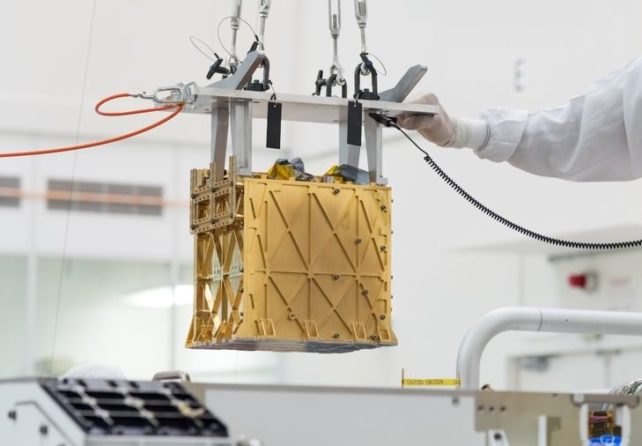NASA confirms breathable oxygen can actually be produced on Mars
- September 16, 2023
- 0
An experiment on Mars has shown that it is possible to extract breathable oxygen from the thin Martian atmosphere. From its tiny home in the belly of NASA’s
An experiment on Mars has shown that it is possible to extract breathable oxygen from the thin Martian atmosphere. From its tiny home in the belly of NASA’s
An experiment on Mars has shown that it is possible to extract breathable oxygen from the thin Martian atmosphere. From its tiny home in the belly of NASA’s Perseverance rover, the briefcase-sized Mars In-Situ Oxygen Resource Utilization (ISRU) Experiment (MOXIE) repeatedly splits Martian air molecules to create a small but steady supply of oxygen. MOXIE is now about to retire after doing a good job.
“MOXIE’s impressive performance demonstrates that it is possible to extract oxygen from the Martian atmosphere – oxygen that could help provide breathable air or rocket fuel for future astronauts,” said NASA Deputy Administrator Pam Melroy.
“Developing technologies that allow us to leverage the resources of the Moon and Mars is critical to establishing a long-term presence on the Moon, creating a robust lunar economy, and enabling us to support the first campaign for human exploration of Mars.”

The MOXIE experiment, developed by MIT scientists, has been ongoing since Perseverance landed on Mars in February 2021. Not always; Operators on Earth sent MOXIE commands to see how it performed over time under various Martian conditions.
Since then, MOXIE has produced a total of 122 grams of oxygen in 16 launches. According to NASA, this is enough for a small dog to breathe for 10 hours and a human for 4 hours. It works through electrolysis, which uses current to electrochemically split carbon dioxide into its component atoms. MOXIE draws in Martian air through a purifying filter. This purified Martian air is then compressed, heated, and sent through a solid oxide electrolyzer (SOXE). The electrolyzer separates carbon dioxide into carbon monoxide and oxygen ions.
Carbon monoxide is released, but oxygen atoms recombine to O2or molecular oxygen; The kind we need to survive. This gas is then measured for its quantity and purity before being released again. Each run takes several hours. After several hours of warm-up, MOXIE collects oxygen for 1 hour per experiment, followed by a shutdown period. During this operating hour, MOXIE is designed to produce up to 10 grams of oxygen for an astronaut to breathe, or about 20 minutes.
At least on paper it is. How much he managed to produce varied; In its sixteenth launch on August 7, MOXIE put out about 9.8 grams of oxygen to breathe, which was pretty close to the mark. This suggests that Mars can provide an oxygen source despite its thin and rarefied atmosphere.
Even in a worst-case scenario, a device like MOXIE could reduce the amount of cargo that needs to be transported from Earth by supplementing other oxygen sources.
But the researchers, led by MIT physicist and MOXIE principal investigator Michael Hecht, believe that thanks to what they learned from MOXIE, they can develop a full-scale system that includes a new and improved version of the oxygen extraction device. gas and liquid storage method.
Future Martian explorers will need all the help they can get to become self-sufficient. Between the breathing needs of a team of astronauts living on Mars for a year and the liquid fuel needed to power the spacecraft, approximately 500 metric tons of oxygen would be needed.
But will have to wait. There are many issues that need to be checked and resolved before humans attempt to stay on the red planet for a long time. Oxygen is just one of them.
“We have to make decisions about what things to test on Mars,” Hecht says. “I think there are a lot of technologies on this list; I’m very happy that MOXIE came first.” Source
Source: Port Altele
As an experienced journalist and author, Mary has been reporting on the latest news and trends for over 5 years. With a passion for uncovering the stories behind the headlines, Mary has earned a reputation as a trusted voice in the world of journalism. Her writing style is insightful, engaging and thought-provoking, as she takes a deep dive into the most pressing issues of our time.